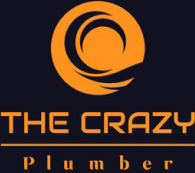Dealing with Low Water Pressure: Causes, Solutions, and Costs
Low water pressure can be more than just a minor inconvenience; it can disrupt your daily routines, from taking a shower to washing dishes. Whether you’re dealing with a trickle from your faucet or a barely-there shower, understanding the common causes of low water pressure and how to address them can help restore comfort and functionality to your home. In this comprehensive guide, we’ll explore the key reasons behind low water pressure, provide actionable solutions, and outline the potential costs involved.
Understanding Low Water Pressure: Common Causes
Several factors can contribute to low water pressure in your home. Identifying these causes is crucial to finding the right solution. Here are some of the most common reasons:
1. Clogged Pipes
Over time, pipes can accumulate mineral deposits, rust, and debris, leading to significant blockages that restrict water flow. This issue is particularly prevalent in older homes with galvanized steel pipes, which are more prone to corrosion and buildup.
2. Leaking Pipes
Even minor leaks can cause a noticeable drop in water pressure. Leaks often lead to water damage, damp spots, and increased water bills. Regularly checking for signs of leaks can help address the issue before it exacerbates.
3. Faulty Fixtures
Sometimes, the problem lies not with the plumbing system but with the fixtures themselves. Aerators, showerheads, and faucets can become clogged with sediment or mineral buildup, resulting in reduced water flow.
4. Pressure Regulator Issues
A pressure regulator controls the pressure of water entering your home. If this valve malfunctions or is set incorrectly, it can lead to insufficient water pressure throughout your home.
5. Municipal Water Supply Problems
If your neighbors are experiencing similar issues, the problem might stem from the local municipal water supply. Municipal supply problems can lead to widespread low water pressure in affected areas.
Practical Solutions to Address Low Water Pressure
Once you’ve identified the cause of low water pressure, you can implement the following solutions to restore optimal water flow:
1. Clean or Replace Fixtures
Clogged fixtures often cause reduced water pressure. To clean a faucet aerator or showerhead, follow these steps:
- Remove the aerator or showerhead.
- Soak it in vinegar for a few hours to dissolve mineral deposits.
- Scrub with a brush to remove any remaining buildup.
- Rinse thoroughly and reattach the fixture.
If cleaning doesn’t resolve the issue, replacing the fixture might be necessary.
2. Check for Leaks
Inspect your home for signs of leaks, such as damp spots, water stains, or mold growth. To perform a leak test:
- Turn off all water appliances.
- Check your water meter.
- Wait a few hours without using any water.
- Check the meter again. If it has moved, a leak is likely present.
For hidden leaks or complex repairs, contacting a professional plumber is advisable.
3. Replace Old Pipes
If your home has outdated, corroded pipes, consider replacing them with new, durable materials. Although this can be a significant investment, it prevents future plumbing issues and can increase your home’s value.
4. Adjust or Replace the Pressure Regulator
If you suspect the pressure regulator is at fault, you can attempt to adjust it or seek assistance from a plumber. Replacing a faulty pressure regulator can often resolve low water pressure issues effectively.
5. Contact the Water Supplier
If the problem appears to be with the municipal water supply, contact your local water supplier. They can provide information on ongoing issues and estimated resolution times.
Costs Associated with Fixing Low Water Pressure
The cost of addressing low water pressure can vary based on the underlying cause and the extent of repairs needed. Here are some estimated costs for common solutions:
- Cleaning or Replacing Fixtures: $50 – $200
- Leak Detection and Repair: $150 – $600
- Replacing Old Pipes: $2,000 – $15,000 (depending on the size of your home)
- Replacing a Pressure Regulator: $250 – $500
While some fixes are relatively affordable, more extensive repairs can be costly. Addressing low water pressure promptly can help prevent further damage and maintain your home’s plumbing system.
When to Call a Professional Plumber
While DIY methods can resolve some low water pressure issues, others require professional expertise. Consider calling a plumber in the following situations:
- Identifying and Repairing Hidden Leaks: Plumbers have the tools and experience to detect and fix leaks that are difficult to locate.
- Replacing Old or Corroded Pipes: This complex job should be handled by a professional to ensure proper installation and prevent future problems.
- Adjusting or Replacing a Pressure Regulator: A plumber can accurately adjust or replace the pressure regulator to ensure it functions correctly.
- Persistent Low Water Pressure: If DIY solutions fail to improve the situation, a plumber can diagnose and address the underlying issue.
Understanding the causes of low water pressure and knowing how to address them can help you maintain a comfortable and functional home. If you’re facing persistent low water pressure, consulting a professional plumber can provide a comprehensive solution and ensure your plumbing system remains in excellent condition.
For more tips on maintaining your home’s plumbing and addressing common issues, stay tuned to our blog!







